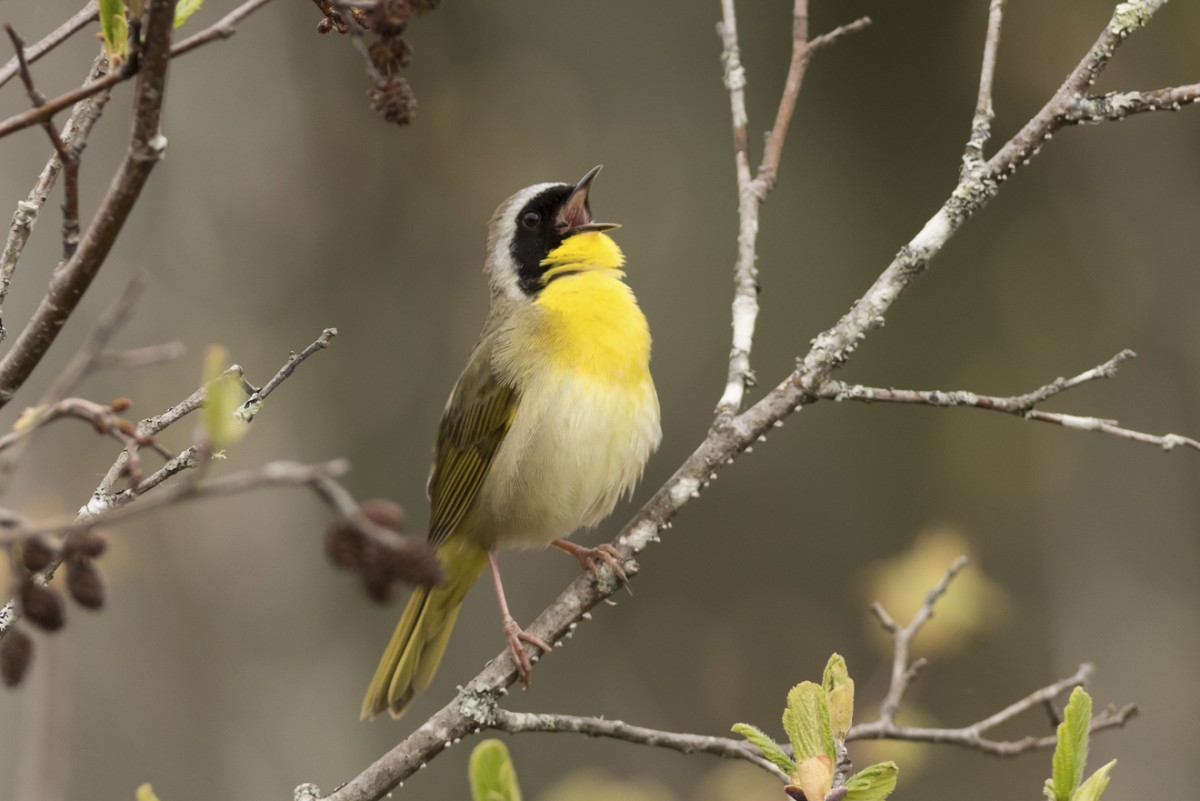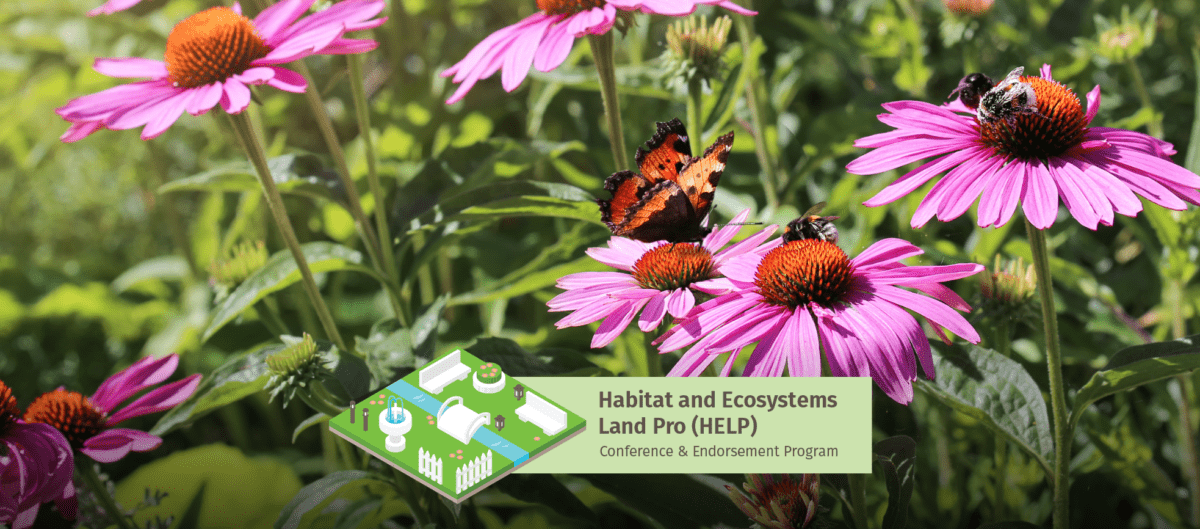November 2006
Good news on keeping roadless areas roadless — Environmentalists scored a major victory in wilderness protection in September when Judge Elizabeth LaPorte of the U.S. District Court Northern District of California ruled that the Bush administration had illegally repealed the Roadless Rule for National Forests.
The Roadless Rule dates back to the last days of the Clinton administration when after nearly three years of analysis and the greatest public outreach in the history of federal rulemaking, the U.S. Forest Service adopted the Roadless Area Conservation Rule, to conserve a large portion of unprotected wildland in National Forests.
One of the most significant public lands measures of the last century, the Roadless Rule protected 58.5 million acres of roadless areas on National Forests and Grasslands from most logging and road construction. The rule was supported by 95% of the 1.6 million individuals expressing their views during the public comment period.
However, the promise of the Roadless Rule was short-lived. As soon as President Bush was inaugurated, his administration began efforts to delay, weaken and overturn it. On the day of his inauguration, Bush ordered the postponement of all federal rules not yet in effect. Later that year, the administration opted to not defend the Roadless Rule against legal challenges, an unprecedented action ignoring the law. In addition, the US Forest Service issued directives significantly weakening the rule.
Legal battles ensued with the states, environmental groups, logging companies, Indian tribes and others weighing in. In the meantime, the Forest Service exempted the huge Tongass and Chugach National Forests from the rule, and in May 2005 the administration repealed the Roadless Rule and replaced it with a state petition process. Again challenged by the states, the Bush administration pushed ahead with its plans, and in August of this year, the first logging in roadless areas began.
However, in September, Judge LaPorte set aside the state petition plan and ruled the administration acted illegally in repealing the Roadless Rule. The Tongass National Forest exemption continues under this ruling, unfortunately. Since then, the timber industry has appealed Judge LaPorte’s decision, and the Bush administration has grudgingly suspended planned sales in roadless areas.
What you can do — Clearly President Bush will fight as long as possible to open the National Forest roadless areas to logging. Several federal legislators, including Rep. Sherwood Boehlert, have introduced bills that would make the Roadless Rule the law of the land. This would eliminate meddling and delay in implementing the rule.
Write your federal representatives and let them know the small remaining areas of roadless forests must be protected, and ask them to support a law doing just that.
Wolves under fire — One of the premier wildlife species, the wolf is a symbol of the magnificence of the wild lands that remain relatively untouched by humans. They are important in maintaining the balance of nature — a fact we see in NY where deer populations have risen dramatically since the extirpation of this top predator.
Our nation has not treated wolves well, however. Millions were trapped, poisoned or shot during the first half of the 20th century, in many cases encouraged by government bounties and policies. Establishment of the Endangered Species Act (EAS) in the 1970s likely saved the wolf from extinction. After a long and hard-fought battle, wolves were reintroduced to Yellowstone National Park, where they have thrived. Today, 5000 grey wolves can be found in Minnesota, Michigan, Wisconsin, Montana, Idaho, Wyoming and the desert southwest — still a fraction of their original numbers.
The Bush administration is pushing to remove the ESA safeguards for grey wolves, clearly a premature action. If this change comes about, wolf management and protections will be left to the states. An example of what would happen under this scenario occurred in January of this year, when the Interior Department signed an agreement giving the state of Idaho management authority over wolves in the state. Less than a week later, the Idaho Department of Fish and Game announced its proposal to kill up to 75 percent of the wolves within the Clearwater National Forest’s Lolo district, due to unsubstantiated concerns that wolves were causing unacceptable impacts to elk populations there.
In addition, over the past 3 years, Alaska has engaged in an annual aerial kill where wolves are tracked and gunned down by aircraft. Now the program is set to expand the areas where aerial gunning is permitted and to expand the use of snowmobiles to chase and kill wolves.
The Federal Airborne Hunting Act was passed in 1971 specifically to prevent this sort of aerial wolf kill. However, the Bush administration is unwilling to enforce the law and the state of Alaska claims that its actions are technically legal, because it doesn’t allow “hunting” of wolves, but rather the “control” of wolves to protect game populations. This year, 152 wolves have already been killed by aerial shooting. Despite two ballot measures in past years that have banned this practice, the Alaska Board of Game continues to promote wolf kills and is now considering killing plans like these to “control” the populations of brown and black bears as well.
What you can do — Contact President Bush and tell him it is too soon to remove the wolf from the Endangered Species Act. Also insist that his administration enforce the Airborne Hunting Act and put an end to Alaska’s wolf killing practice. Be sure to send a copy to your federal legislators and to Alaska’s Governor, Frank Murkowski (P.O. Box 110001, Juneau, AK 99811-0001; fax 907-465-3532). An online letter to protect Alaska’s wolves can be found here.
Elections 2006 — The November election is approaching, and the contest for governor of NY State will likely bring about a significant change in the state’s approach to the environment, for better or for worse. Democrat Eliot Spitzer had an excellent environmental record as Attorney General, following in the footsteps of his predecessor, Bob Abrams. He used that office to sue the federal government and states that pollute NY’s air from power plants outside the state. He also pushed for significant improvements in emissions from in-state plants. Other areas in which Spitzer has been active include appliance efficiency, water quality and illegal dumping. Republican John Faso has not made the environment a priority in his campaign, with no mention of it in his “Faso Plan”. His record as a legislator was also lackluster, receiving low ratings in the annual environmental reviews provided by Environmental Advocates.
What you can do — Be an informed voter and seek out the positions of candidates, including those for State Senate and Assembly. Good sources of information are the NY League of Conservation Voters and Environmental Advocates.
Oneonta biomass environmental review continues — The wood-burning biomass electric generating plant proposed to be built in the Oneonta rail yards has received a positive declaration under the State Environmental Quality Act. This means that the lead agency — in this case the City of Oneonta Planning Commission — has determined that the project will have a significant environmental impact, and that a full review must be done.
The Roundhouse Renewable Energy plant would generate 35 megawatts of power, enough for 35,000 homes. The developer states that the plant will burn about 1,100 tons of wood chips a day, coming from existing logging operations, waste construction lumber, and possibly from fast-growing tree plantations.
A number of environmental concerns have been raised, including the use of up to 360,000 gallons of cooling water per day. This may come from the Oneonta municipal water supply, from wells drilled on site, or from the Oneonta wastewater plant as treated wastewater. Emissions from the plant are expected to be similar to those from 10 or so wood stoves.
Disposal of the cooling water is also an issue. At present the developer plans to discharge it into on-site wetlands, which drain to the Susquehanna River.
Removal of wood that would otherwise be left to biodegrade in the forest could reduce the health of the remaining trees and lower habitat quality for wildlife.
Other issues such as noise, lighting, increased traffic, visibility, etc. have been voiced by city residents.
Ideally the environmental impact statement will expand on these issues and others. It also will look at alternatives to the plant, such as fossil fuel generation, which almost certainly has greater impacts than biomass, including higher greenhouse gas emissions.
What you can do — Stay informed, and participate in the public portion of the environmental review. Comments and opinions can be made now to the City of Oneonta Planning Commission, c/o City Clerk James Koury, City Hall, 258 Main St., Oneonta, NY 13820. City residents can make their views known to their alderman.
New tax benefit for land easements — Although the 2006 NY State legislative session was unproductive in terms of passing the hoped-for Super Bills — including wetland protection, inclusion of non-carbonated beverages under the deposit law, and establishment of a community preservation fund — one little-noticed bill did get through that may have significant impacts on open space preservation in the state.
This legislation provides owners of land protected by a permanent conservation easement with an annual income tax credit equal to 25% of their property taxes. This gives landowners even greater incentive to protect their properties for the future by transferring development rights to land trusts, government, or other non-profits. Until now, tax benefits for these forward-looking individuals had been minimal at best.
The reduction in property taxes does not burden local municipalities, as the credit comes after landowners pay their local taxes. The new tax credit will be available after the state Department of Taxation and Finance promulgates regulations to carry it out.
What you can do — If you presently have land protected by a conservation easement, watch for announcement of the availability of the tax credit. If you would like to be sure your land stays undeveloped and natural for the future, contact a land trust for more information on this valuable tool. Local land trusts include the Otsego Land Trust, (607) 547-2366, and the Schoharie Land Trust, (518) 875-6892.
Environmental Protection Fund held hostage in Albany — The NYS Legislature created the Environmental Protection Fund (EPF) in 1993 to provide a reliable, dedicated source of funding for a variety of key environmental programs in NYS. The EPF is funded by a dedicated portion of the revenues from the NYS real estate transfer tax, which ensures a reliable stream of revenue to implement EPF projects. Each year, the NYS legislature must appropriate this revenue to the EPF. The EPF is being held hostage! For the first time in 13 years due to political infighting, the EPF is currently being left out of the NYS budget. $200 million is already available to fund the EPF, but is not being dedicated due to political squabbling. Unless the Governor, Senate and Assembly can put politics aside and come to an agreement, the EPF will be bankrupt in the 2006-2007 budget. New York’s environment will suffer if this important issue is not resolved.
New York’s environment, economy, and public health are dependent upon a strong and fully-funded EPF. The EPF supports numerous programs in every part of the state that have a tremendous benefit to all New Yorkers. A sample of program categories that the EPF supports include:
- Open Space & Pollution Prevention — This category includes programs that support the acquisition of open space and farmland protection. Critical pollution control programs including non-point-source pollution reduction receive funding through this category. Important water quality projects, including programs that benefit the South Shore Estuary Reserve, Great Lakes, rivers and other essential water bodies are also funded.
- Solid Waste — This category includes program funding for municipal recycling and pesticide reduction.
- Parks, Recreation & Historic Preservation — The EPF supports local waterfront revitalization projects, community parks, and important environmental stewardship programs.
The EPF must be funded in the 2006-2007 budget. The Governor, Senate and Assembly must agree that our environment is more important than politics. As the 2006-2007 NYS budget is finalized, funding must be appropriated to the EPF to ensure critical environmental programs continue, including funding for environmental education at zoos and botanical gradens.
What you can do — Write Gov. Pataki and your state legislators and urge them to allocate funding to the Environmental Protection Fund in the 2006 – 2007 NYS budget.
Environmental issues still pending in Albany — With a budget now in place, the NY State Legislature is turning its attention to other legislation, including some important environmental bills. As mentioned here at the beginning of the legislative session, some of these have come close to passage over the past couple of years, and a good push this time could put them over the top. Also, this is an election year for all State Senators and Assemblymembers, so they should be receptive to hearing from constituents.
Among the bills that are worthy of support are:
- The Community Preservation Act — This would give towns in NY the authority to create a community preservation fund by enacting a local real estate transfer fee of less than 2% on property transactions over a certain dollar amount. These dollars would be used to preserve open space, working farms and historic properties. This would provide much-needed funds to help protect the character of communities, especially those facing heavy development pressures. This bill has strong support in the Legislature and has already passed the Assembly this year, but has been blocked by pressure on the leadership from big developers. Senators need to hear that this Community Preservation Act should be brought to the floor for a vote.
- The Clean Water Protection & Flood Prevention Act — Necessitated by the Bush Administration’s interpretation of a 2001 Supreme Court decision removing long-standing protections under the Clean Water Act for smaller and intermittent wetlands and streams, this bill would lower the threshold for state authority to protect wetlands from 12.4 acres to 1 acre.
These smaller areas are critical wildlife habitat and provide flood and drought protection by holding water during periods of extreme weather. They are now vulnerable to draining and filling due to a lack of legal protection.
This bill has also passed the Assembly but is held up in the Senate.
- SEQRA Standing — The State Environmental Quality Review Act (SEQRA), enacted in 1975, governs the environmental review process for significant projects in which a government agency has a role. This is the law that requires environmental impacts be considered prior to approval of projects and actions. A court decision has also significantly weakened this law, by requiring that individuals must meet an almost impossible legal threshold in order to appeal SEQRA decisions. This decision is contrary to the original legislative intent of the law.
Legislation has been put forward to correct this and clarify who has legal standing under SEQRA. Again, this has passed the Assembly but languishes in committee in the Senate.
- Bigger Better Bottle Bill — This perennial, but common-sense legislation has been in legislative limbo due to opposition from the beer and beverage industry, which are heavy contributors to legislators. Strongly supported by the public, it would add non-carbonated drinks such as juice and bottled water to the list of beverages that have a deposit, as soda and beer currently do. These drinks now make up a large portion of beverage sales in the state, and a similar segment of the discarded trash on our roadsides. The bill would also direct the unclaimed deposits that are now kept by bottlers to environmental programs, including recycling.
Pressure needs to continue to be applied to move this bill forward. With a new Governor and potentially more enlightened legislature next year, the Bigger Better Bottle Bill could become law.
What you can do — Contact your state Senators and Assemblymembers and ask for their public support for these bills. Let them know that you are aware of their actions on these and other bills and will remember in November! Stress that they need to stand up to their leadership and get these measures to the floor for votes and approval.
***********************************************************************
April 2006Republicans attack Endangered Species Act — yet again — Once more the Bush administration and Republicans in Congress have declared war on one of the most successful and well-supported environmental lawsthe Endangered Species Act.
For over thirty years, the ESA has provided a safety net for wildlife,fish and plants at the brink of extinction. It has prevented the disappearance of the Bald Eagle, the Gray Wolf, the Pacific Salmon, among many other species.
However, US Senator Michael Crapo of Idaho has introduced legislation that would dramatically weaken the ESA If this bill becomes law, it would eliminate habitat protection, abandon recovery of species near extinction, repeal protections against hazardous pesticides, and politicize the scientific decision-making process. In addition, it would set up an unprecedented entitlement program requiring the federal government to use taxpayer dollars to pay developers for complying with the law!
Similar legislation passed the House of Representatives last year, so this must be stopped in the Senate.
What you can do — Urge our US Senators, Charles Schumer and Hillary Clinton to stand up against this irresponsible and unnecessary attempt to eviscerate this important law. Let them know the ESA is seen as a model conservation statute well beyond our boarders and that our commitment to protecting at risk species encourages similar efforts overseas.
Good news in the State Assembly — On March 20 the NY State Assembly overwhelmingly passed the Community Preservation Act by a vote of 106 to 30. This will give cities and towns the ability to raise funds for protection of natural areas, historic preservation and working farms by allowing them to establish a small fee on large real estate transfers for these purposes.
The law is voluntary for each municipality, but has been popular in the Long Island towns where it is already allowed. Large areas of open space and farmland have been preserved on Long Island where development pressures are very high.
The Community Preservation Act is supported by a broad coalition of organizations and individuals — groups that rarely come together on issues. It is also has bipartisan support in the legislature, as the Assembly vote shows. However, it has been kept from a vote in the State Senate by pressure on the leadership from wealthy developers and real estate interests. If it can reach the floor, it almost certainly will pass and be signed by Gov. Pataki.
What you can do — Local State Senator James Seward is part of the Senate Republican leadership and can help bring a vote on this bill. Contact Sen. Seward and tell him that you want to see the Senate take a stance on the Community Preservation Act. More delay is unfair and undemocratic. Sen. John Bonacic is also influential with the Republican leaders and should be urged to work for a vote.
***********************************************************************
March 2006Bush budget would sell off public lands — President Bush’s proposed 2007 budget would put as much as 800,000 acres of publicly owned lands into private hands to raise $1 billion for the US Treasury. In addition to major cuts in already underfunded public lands programs, the Bush administration now wants to begin selling off these lands themselves.
Although details are not yet firm, over 300,000 acres of National Forests in 32 states could be put on the auction block. These lands have already been identified, and the administration has given the Bureau of Land Management a sales quota that may require the agency to sell as many as a half million additional acres. These public areas are a birthright to Americans – special places that provide wildlife habitat, recreation opportunities, water protection, and other environmental benefits. They should not be sold off to developers, ranchers, and logging and mining interests to please the conservative right wing.
The Bush plan comes just a few months after bipartisan opposition in Congress derailed a similar scheme. California Congressman Richard Pombo – well-known for his efforts to gut the Endangered Species Act – pushed a plan to sell millions of acres of public lands through the House of Representatives in a budget reconciliation bill. Pombo’s legislation even included units of the National Park System to go on the auction block. Fortunately, opposition from conservationists and even hunters, anglers and western state governors derailed the measure in the Senate.
Now the President has taken up the charge. He and Congress need to hear that these lands that belong to all the American people are a public treasure, not a commodity to be used to raise money for the government to squander.
What you can do — contact the President, your Congressional Representative and US Senators Hillary Clinton and Charles Schumer to express your sentiments over this budget plan.
Comments needed to improve cleanup standards — NY State has issued proposed regulations for cleaning up contaminated sites in the state. The goal is to restore the thousands of “brownfields” – former industrial areas with residual chemicals – to the point where they can again be used. However, the levels of contamination that would be allowed to remain on the sites falls short of protecting public health, as well as air, ground and surface waters and fish and wildlife.
The NY State Department of Environmental Conservation has put forth regulations for public comment, over a year behind schedule, and has provided a 120-day public comment period. Environmental and community groups have asked for more time to review and express their concerns over the cleanup standards.
According to those concerned with the regulations, they do not meet either the letter or the spirit of the state Superfund law that requires cleanups. For example, DEC would allow extremely high levels of lead to remain in soil at “cleaned” sites, from 400 parts per million (ppm) for most unrestricted cleanups to up to 3900 ppm for industrial cleanups. These amounts dramatically exceed rural background levels of lead, which are between 4 and 63 ppm, and are far higher than any New England state’s industrial cleanup level.
The regulations would also allow such band-aid solutions as paving over contaminated soil, and limiting use of contaminated groundwater. DEC’s plan would not apply the stringent soil cleanup standards designed to protect ecological resources, even if the site is right next to a river or stream. Thus, many “cleaned up” sites could have residual contamination that can pollute groundwater and harm fish and wildlife — in violation of the state Superfund law.
In addition, the proposal limits meaningful public participation in cleanup decisions. The new regulations also allow land use to be considered when selecting cleanup remedies for Superfund sites, in violation of the Superfund law, which says the goal is to restore sites “to pre-disposal conditions” whenever possible.
What you can do — Public comment will be accepted by DEC until March 27, although hopefully this will be extended. Let the state know that cleanup of brownfields should not be short-circuited by lowering standards, and that public and environmental health should be their top priority – not getting these sites redeveloped. Comments may be sent to: Robert W. Schick, P.E., NYSDEC, Division of Environmental Remediation, 625 Broadway, Albany, NY 12233-7014. Email written comments to: derweb@gw.dec.state.ny.us .
***********************************************************************
February 2006Success on Alaska!— In the last issue we discussed the Bush administration’s efforts to open up the Alaska National Wildlife Refuge (ANWR) to oil and gas drilling. Congress was engaged in intense political maneuvering to include an Alaska drilling provision in year-end budget bills, and we urged you to contact NY’s US Senators and Representatives to oppose these attempts.
The drilling provision moved quickly though, and the House of Representatives passed a defense appropriations bill that included a rider to open up the Refuge. That meant the last place to block it was the Senate, where a courageous handful of Senators filibustered the entire bill to force removal of the drilling rider. They did this against immense political pressure – opposing a defense bill is always a difficult action. They were supported by other Democrats in the Senate and even by a few Republicans. A key vote to break the filibuster failed on Dec. 21, ensuring protection of ANWR for the immediate future.
This victory came about as a result of intense last-minute contacts with senators from the environmental grassroots, including DOAS. This shows the impact we can have when we make the effort to stand united against attempts to exploit our natural resources.
What you can do— Write US Senators Charles Schumer and Hillary Clinton and thank them for standing up against the Bush attempt to invade ANWR for oil and gas.
Environmental Agenda in Albany for 2006— The NY State Legislature will soon return to Albany to begin its 2006 session. All Senate and Assembly seats will be up for election this year, as well as Governor. This creates an opportunity to push for good environmental legislation, much of which is well-supported by the public, but has been stalled by special interest pressures.
Some of these bills came close to passing last year, and this could be the year they make it over the top. Among the priority legislation:
- The Community Preservation Act—This bill would give towns in NY the authority to create a community preservation fund by enacting a local real estate transfer fee of less than 2% on property transactions over a certain dollar amount. These dollars would be used to preserve open space, working farms and historic properties. This would provide much needed funds to help protect the character of communities, especially those facing heavy development pressures.
This bill has strong support in the Legislature but has been blocked by pressure on the leadership from wealthy developers.
- SEQRA Standing—The State Environmental Quality Review Act (SEQRA), enacted in 1975, established an environmental review process for significant projects. It is one of the most important and effective laws we have to ensure that potential impacts to air and water quality, wildlife, public health, and other environmental considerations are taken into account before a project is approved. However, a 1991 court ruling significantly reduced the protections of SEQRA by requiring that individuals show direct injury from projects before they can have legal standing in SEQRA appeals. This decision was contrary to the legislative intent of the law when it was enacted. Legislation has been put forward to correct this and clarify who has standing under SEQRA.
- Bigger Better Bottle Bill—This sensible legislation has been on hold for several years due to opposition from the beverage industry. It would add non-carbonated drinks such as juice and bottled water to the list of beverages that have a deposit, as soda and beer currently do. These drinks now make up a large portion of beverage sales in the state, and a similar segment of the discarded trash on our roadsides. The bill would also direct the unclaimed deposits that are now kept by bottlers to environmental programs, including recycling.
- The Clean Water Protection & Flood Prevention Act—Another piece of legislation necessitated by a court decision, this bill would provide protection for small and intermittent wetlands in NY. Prior to 2001, these wetlands were regulated by the federal government under the Clean Water Act. However a US Supreme Court decision that year removed these long-standing protections, leaving small wetlands vulnerable to filling, draining and other development.
These areas are critical wildlife habitat and provide flood and drought protection by holding water during periods of extreme weather. This bill would lower the threshold for state wetland authority to 1 acre, improving the safeguards for these environmentally important parcels.
What you can do— Contact your state Senators and Assembly members and ask for their public support for these bills. Let them know that you will be watching their actions this session and basing your vote in November on how well they perform. Stress that they need to stand up to the legislative leaders and get these measures to the floor for votes and approval.
***********************************************************************
January 2006Biomass energy plant for Oneonta— Catalyst Renewables Corp. is presently considering building a wood-burning power plant in the City of Oneonta. The plant would be located in the area of the former rail yards in the city’s west end. Generating capacity would be 31 megawatts of electricity, enough to supply approximately 5000 homes. The power would be sold via the NY State electrical grid.According to the company, the plant would be fired by wood waste from existing logging operations in a 50-mile radius of Oneonta. This would include tops, branches and unsalable trees. The wood would be chipped at the logging site and transported by truck to Oneonta. It is possible that clean construction wood waste and/or planted tree crops such as willow or aspen may also make up part of the fuel supply.
The plant would produce steam to run an electric generator. Significant quantities of water — 300-400 gal./minute — will be needed to cool the steam after it leaves the turbine. This water may be treated water from the Oneonta wastewater plant, or groundwater from an on-site well. Remaining cooling water will be sent to the wastewater plant and ultimately to the Susquehanna River. Air emissions from the plant would be treated by electrostatic precipitators to remove particulates, or soot. Other emission reduction devices would reduce NOx and other pollutants by 75-80%. Leftover ash would be distributed to farmers as a soil additive and lime substitute.
As with any energy source, there are pros and cons to this proposal. It is a relatively benign fuel source — containing little in the way of pollutants. In addition it is considered renewable energy if the logging operations are conducted in a sustainable manner. The plant developers contend that it is CO2 neutral, since new tree growth will take up as much or more CO2 as is emitted. The plant will also create an estimated 150 jobs, mostly in logging and trucking, and spend $8.5 million annually in fuel purchases.
However, it will marginally reduce air quality in Oneonta and increase truck traffic. The issue of water is significant, especially if it is drawn from the water table. Although the company states that there will be no increased logging to supply fuel for the plant, the economic benefit of selling wood chips may make some otherwise uneconomic logging operations now possible. Removal of wood wastes from the forests reduces the nutrients left for new growth.
Catalyst Renewables currently owns and operates the Lyonsdale Biomass wood-fired, combined heat and power facility located in Lewis County, NY. There have been no major environmental concerns expressed over the operation of this plant or the wood harvesting operations that supply its fuel.
What you can do— The company is applying to the NY State Energy Research and Development Agency for funding for the project. Without this support the project will not go forward. If it should move beyond this state, there will be a public involvement process, led by the City of Oneonta. Citizens both in the city and beyond should monitor the progress of the proposal, educate themselves, and express their views to decision-makers.
Alaska drilling still up in the air— The effort by the Bush administration to open up the Alaska National Wildlife Refuge (ANWR) to oil and gas drilling has been caught up in budget battles in Washington.
A group of environmentally-minded Republicans in the House — including local Rep. Sherwood Boehlert — joined with Democrats to force removal of an ANWR drilling provision from the House’s version of the pending budget bill. This unexpected but positive success has provided a temporary reprieve for our nation’s largest and most spectacular wildlife area.
The nineteen million acres of ANWR wilderness stretch across Northeastern Alaska, home to a stunning diversity of ecological zones, from vast expanses of coastal tundra to boreal forests and spectacular snow-capped mountain peaks. Set aside more than 50 years ago, the refuge provides critically important habitat to over 250 species of wildlife, such as wolves, grizzlies, caribou, and migratory birds.
Even under the most optimistic estimates, ANWR would provide no more than a few weeks worth of energy for the US — hardly a sensible policy or an answer to national security concerns.
What you can do— First and foremost, contact Rep. Boehlert and thank him for his good work on behalf of ANWR and on other environmental issues. He has been a stalwart and a positive influence on his colleagues throughout his term in Congress. Urge him to continue to stand strong for ANWR. If not in Boehlert’s district, contact your representative with the same message.
In the US Senate, Republicans have the votes to push ANWR drilling through. However, negotiations over the budget will be contentious and difficult and Senators Hillary Clinton and Charles Schumer will play a role in this process. Let them know how important ANWR is and ask them to do all they can to protect it.
*********************************************************************** - The Community Preservation Act—This bill would give towns in NY the authority to create a community preservation fund by enacting a local real estate transfer fee of less than 2% on property transactions over a certain dollar amount. These dollars would be used to preserve open space, working farms and historic properties. This would provide much needed funds to help protect the character of communities, especially those facing heavy development pressures.








